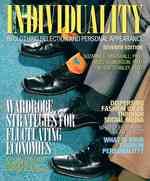- ホーム
- > 洋書
- > 英文書
- > Science / Mathematics
基本説明
The one stop complete technical manual and buyers guide for all those in the power, process, gas, petrochemical, nuclear and water industries.
Full Description
The one stop complete technical manual and buyers guide for all those in the power, process, gas, petro-chemical, nuclear and water industries. European Compressors & Applications has been designed and written for compressor users. It has been designed to provide practical information about the outline design, selection, and installation of compressors and how these affect performance.
Contains full principles, practice, types of equipment, suitability for application component details, maintenance, manufactures' information, guidelines for specification and fitting as well as a complete and comprehensive Buyers' Guide - including contact details for all valve suppliers and manufacturers.
Ideal for any plant engineer, plant manager, maintenance manager, designer, specifiers, marketing and sales engineers and others who make buy, sell or fit this equipment.
Uniquely comprehensive source of information
Heavily illustrated
Easy to use
The one stop reference for industry
Written by engineers for engineers
Contents
1 Basic principles and compressor types 1 1.1 Gas laws and gas properties 3
1.1.1 Thermodynamic laws and basic gas laws 3
1.1.2 Continuity, Bernoulli's equation, momentum and energy equation 4
1.1.2.1 The continuity equation 4
1.1.2.2 Bernoulli's equation 4
1.1.2.3 The momentum equation 5
1.1.2.4 The energy equation 6
1.1.3 Pipe flow losses 7
1.1.3.1 Reynolds Number 7
1.1.3.2 Head losses in straight pipes 7
1.1.3.3 Head losses in fittings 8
1.1.3.4 Hydraulic diameter 8
1.1.3.5 Total head losses in the pipe system 8
1.1.4 Perfect and real gases 9
1.1.5 Diagrams of gas properties 14
1.1.6 Properties of mixtures 15
1.1.6.1 Mean molar mass 17
1.1.6.2 Effective value of the gas constant 17
1.1.6.3 Mean molar specific heat 17
1.1.6.4 Isentropic exponent of the mixture 17
1.1.6.5 Compressibility of the gas mixture 17
1.1.6.4 Mixture specific volume 18
1.1.7 Mass / volume relationship 18
1.1.8 Principles of compression 18
1.1.9 Polytropic head 19
1.1.10 Polytropic efficiency 20
1.1.11 Power consumption 20
1.2 Basic compressor types 20
1.2.1 Types of compressors 20
1.2.1.1 Rotodynamic compressors 20
1.2.1.2 Positive displacement compressors 20
1.2.2 Compressor terminology and abbreviations 21
1.3 General aspects of rotodynamic compressors 31
1.3.1 Jet compressors 31
1.3.2 Rotodynamic compressors 32
1.3.3 Surge and stonewall in rotodynamic compressors 35
1.4 General aspects of positive displacement compressors 35
1.4.1 Basic principles 35
1.4.2 Ideal compression processes 36
1.4.3 Real compression process 36
1.4.4 Mechanical work input 36
1.5 System characteristics and operating points 37
1.6 Multi-staging and intercooling 38
2 Centrifugal compressors - construction and design 39
2.1 General 40
2.2 Construction 40
2.2.1 Impellers 40
2.2.2 Diffusers 41
2.2.3 Multi-staging 41
2.2.4 Intercoolers 41
2.2.5 Compressor casings 42
2.2.6 Shaft and impeller arrangements 45
2.2.6.1 "Overhung" design 45
2.2.6.2 Straight-through design 45
2.2.6.3 Integrally-geared compressor 46
2.2.7 Multi-casing / driver configurations 48
2.2.8 Materials 49
2.3 Number of compression groups, number of stages per group and power consumption 51
2.3.1 General 51
2.3.2 Number of compression groups 51
2.3.3 Number of impellers per group 55
2.3.4 Power consumption 56
2.4 Operating problems 57
2.4.1 Speed limits 57
2.4.2 Aerodynamic instability 57
2.4.3 Rotating stall 58
3 Axial-flow compressors - construction and design 59
3.1 General 60
3.2 Construction 62
3.2.1 Rotors 62
3.2.2 Stators 63
3.2.3 Materials 63
3.2.4 Variable geometry, multi-staging and blow-off valves 63
3.3 Number of compression groups, number of stages per group and power consumption 63
3.3.1 Number of compression groups 64
3.3.2 Number of stages per group 64
3.3.3 Power consumption 64
3.4 Operating problems 64
3.4.1 Blade vibration 65
3.4.2 Surging 65
3.4.3 Rotating stall 65
4 Reciprocating compressors - construction and design 67
4.1 General 68
4.2 Construction 69
4.2.1 Basic layouts 69
4.2.2 Piston and piston rod sealing 74
4.2.3 Valves 75
4.2.4 Pulsation dampers 75
4.2.5 Materials 76
4.3 Number of compression stages, cylinders per stage and cylinder size 77
4.3.1 Number of compression stages 77
4.3.2 Compressor speed and piston speed and stroke relationships 81
4.3.3 Number of cylinders and cylinder size 81
5 Rotary positive displacement compressors - construction and design 85
5.1 General 86
5.2 Screw compressors 86
5.2.1 Description and operating principle 86
5.2.2 Performance and liquid injection 87
5.3 Roots blowers 88
5.4 Single-lobe compressors 89
5.5 Sliding vane compressors 89
5.6 Liquid ring compressors 90
5.7 Scroll compressors 90
6 Capacity regulation 93
6.1 General 94
6.2 Recycle by-pass control 94
6.3 Discharge control 95
6.4 "On/off" control 95
6.5 Variable speed control 96
6.6 Suction control 98
6.7 Clearance pockets 99
6.8 Step-wise control 99
6.8.1 General 99
6.8.2 Three step control 100
6.8.3 Five step control 100
6.8.4 Multi-cylinder compressors 100
6.9 Variable geometry 100
7 Protection systems 103
7.1 General 104
7.2 Liquid carry-over prevention 104
7.3 Over-pressure protection 105
7.4 Reverse flow protection 105
7.5 Anti-surge protection 106
7.6 Air dryers 107
8 Compressor drivers 109
8.1 General 110
8.2 Electric motor drives 110
8.2.1 Fixed-speed motors 110
8.2.1.1 Torque-speed characteristics 110
8.2.1.2 Direct-on-line starting 112
8.2.1.3 Star-delta starting 112
8.2.1.4 Autotransformer starting 113
8.2.1.5 Soft starting 113
8.2.1.6 PWM variable-speed starting 113
8.2.2 Variable speed drives 114
8.2.3 Current pulsations with reciprocating compressor electric motor drives 114
8.2.3.1 General 114
8.2.3.2 Torque and speed variations 115
8.2.3.3 Torque and current pulsations 116
8.2.3.4 Synchronous motors 117
8.3 Steam turbines 118
8.4 Gas turbines 118
8.5 Turbo-expanders 121
8.6 Internal combustion engines 123
9 Bearings and seals 125
9.1 Bearings 126
9.1.1 General 126
9.1.2 Bearing and shaft problems in rotodynamic compressors 126
9.1.3 Bearing problems in reciprocating compressors 128
9.1.4 Bearing lubrication and life 129
9.1.4.1 Grease lubrication 129
9.1.4.2 Oil lubrication 130
9.1.4.3 Bearing life 131
9.1.5 Special bearings 132
9.2 Process seals 133
9.2.1 General 133
9.2.2 Conventional seals 133
9.2.3 Dry gas seals 134
9.2.3.1 Aerodynamic instability 137
10 Testing 139
10.1 Why test? 140
10.2 Types of tests 140
10.3 Conformity tests 140
10.4 Integrity tests 140
10.5 Operating tests 140
10.6 Performance tests 141
10.7 Recommended tests 142
11 Installation 143
11.1 General 144
11.1.1 Process and maintenance considerations 144
11.1.2 Noise and vibration 145
11.1.2.1 The need for noise control 145
11.1.2.2 Noise from compressors 145
11.1.2.3 Noise from drivers and power transmission elements 145
11.1.2.4 Vibration 146
11.1.2.5 Reciprocating machines 147
11.1.3 Compressors for potentially hazardous areas 147
11.1.3.1 Area classification 147
11.1.3.2 Contribution of compressors to area classification 147
11.1.3.3 Equipment restrictions 147
11.1.3.4 Legislation 148
11.2 Installation configurations 148
11.3 Mountings 149
11.3.1 "Centre-line" mounting 149
11.3.2 Baseplates and foundations 150
11.4 Couplings 151
11.5 Gearboxes 154
11.5.1 General 154
11.5.2 Parallel shaft gears 154
11.5.3 Planetary type gears 155
11.5.4 Gear standards 156
11.6 Alignment 156
11.7 Main plpe connections 156
11.8 Liquid carry-over prevention systems 157
11.9 Service air systems 158
12 Inspection and maintenance 161
12.1 Pre-delivery inspection 162
12.1.1 Transportation and storage 162
12.2 Maintenance 162
12.2.1 General 162
12.2.2 Scheduled maintenance 164
12.2.3 Opportunistic maintenance 165
12.2.4 Condition-based maintenance 165
12.2.5 Breakdown maintenance 165
12.2.6 Recommended maintenance strategies 165
12.2.7 Centrifugal and axial-flow compressors 165
12.2.8 Reciprocating compressors 165
12.3 Condition monitoring 166
12.3.1 General 166
12.3.2 Rotodynamic compressors 167
12.3.3 Reciprocating compressors 167
12.3.4 Rotary type (valve-less) positive displacement compressors 168
13 Compressor selection 169
13.1 General procedure 170
13.2 Compressor type selection 172
13.3 Driver selection 176
13.3.1 Centrifugal or axial-flow compressors 176
13.3.2 Reciprocating compressors 176
13.4 Useful reference specifications 177
13.4.1 Quality standards 177
Why quality standards are needed? 177
The content of quality standards 178
13.4.2 Available specifications 178
13.4.3 Testing standards 179
13.4.4 Safety standards 179
13.4.5 Dimensional standards 179
13.4.6 Material standards 179
14 Typical compressor applications 181
14.1 General 182
14.2 "Oil & Gas" Processes 182
14.2.1 Gas treating for removal of CO2, H2S, COS and mercaptans 182
14.2.2 Recovery and purification of carbon monoxide for use as a chemical feedstock 182
14.2.3 Recovery of elemental sulphur from sour gas 183
14.2.4 Cryogenic gas fractionation used to recover C3 or C2 and higher components 184
14.2.5 Carbon dioxide recovery and purification by cryogenics 184
14.2.6 An improved Claus sulphur recovery unit 185
14.3 Dairy products applications 185
14.3.1 Chilled water 185
14.4 Food processing applications 187
15 Gas properties and other data 189
15.1 Thermodynamic properties of gases 191
15.1.1 General gas and vapour data 191
15.1.2 Table of physical constants 193
15.1.3 Notes and references to Table of physical constants 196
15.2 Pressure/enthalpy charts 201
15.2.1 Nitrogen 201
15.2.2 Carbon dioxide 202
15.2.3 Methane 203
15.2.4 Ethane 204
15.2.5 Ethylene 205
15.2.6 Propane 206
15.2.7 Propylene 207
15.2.8 Iso-butane 208
15.2.9 Normal-butane 209
15.2.10 Iso-pentane 210
15.2.11 Normal pentane 211
15.2.12 Oxygen 212
15.3 Units and conversions 213
15.3.1 SI, The International System of Units 213
15.3.2 Conversion factors for SI units 214
15.3.2.1 Plane angle 214
15.3.2.2 Length 214
15.3.2.3 Area 214
15.3.2.4 Volume 215
15.3.2.5 Time 215
15.3.2.6 Linear velocity 215
15.3.2.7 Linear acceleration 215
15.3.2.8 Angular velocity 215
15.3.2.9 Angular acceleration 215
15.3.2.10 Mass 215
15.3.2.11 Density 216
15.3.2.12 Force 216
15.3.2.13 Torque 216
15.3.2.14 Pressure, stress 216
15.3.2.15 Dynamic viscosity 216
15.3.2.16 Kinematic viscosity 216
15.3.2.17 Energy 217
15.3.2.18 Power 217
15.3.2.19 Volume flow 217
15.3.2.20 Temperature 218
15.3.3 Other conversion factors 218
15.3.3.1 Hardness 218
15.3.3.2 Material toughness 219
15.3.4 Normal quantities and units used within compressor technology 219
16 Useful terms translated 221
17 Classification guide to manufacturers and suppliers 233
17.1 Introduction 234
17.2 Names and addresses - manufacturers and suppliers 235
17.3 Compressor types - manufacturers and suppliers 248
17.4 Ancillary Products and services - manufacturers and suppliers 258
17.5 Trade names - manufacturers and suppliers 261
18 Reference Index 263
Index to Advertisers 272
Acknowledgements 272








